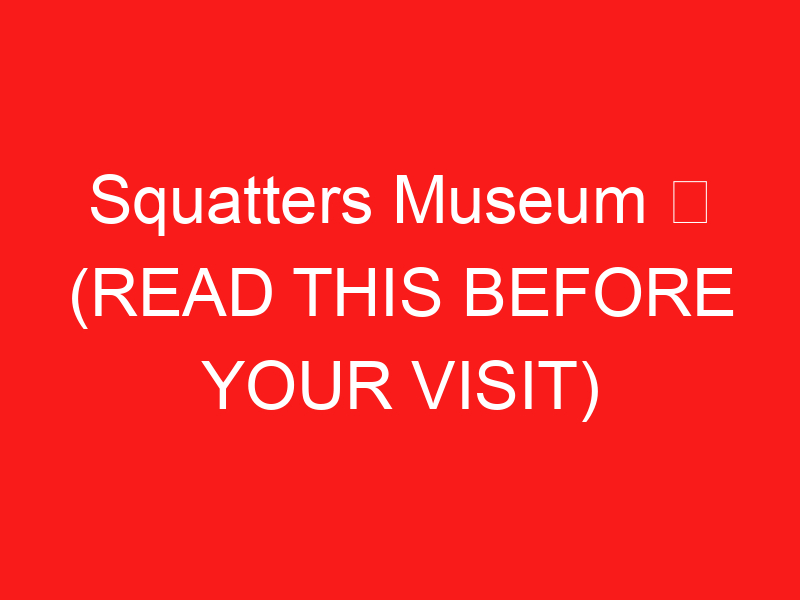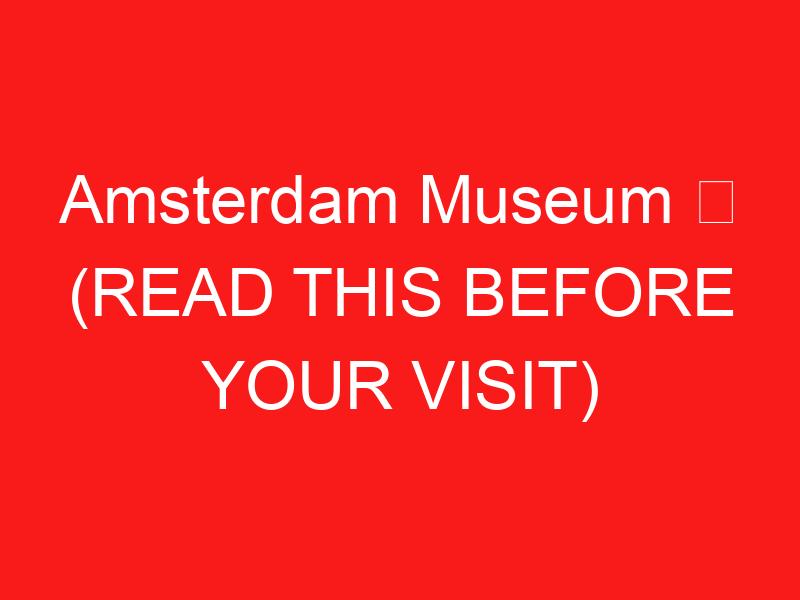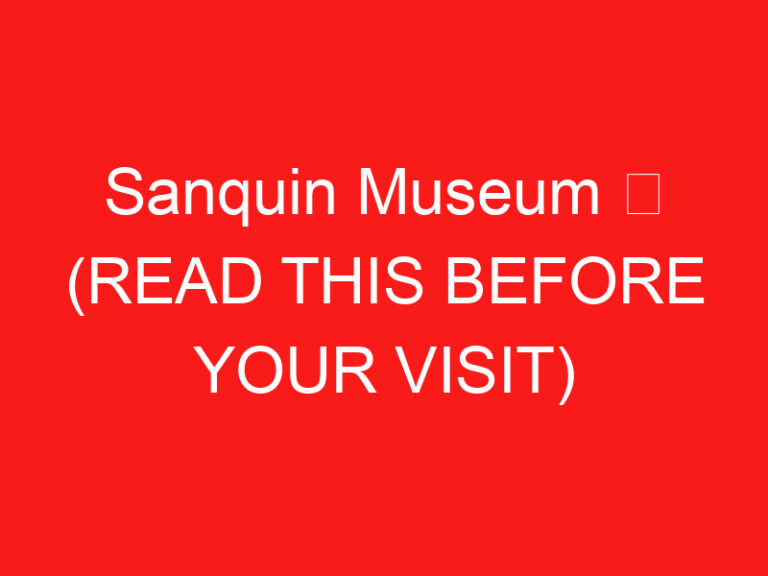Squatters Museum ➥ (اقرأ هذا قبل زيارتك)
Welcome to the fascinating world of the Squatters Museum, a unique cultural landmark that invites visitors to explore the intricate stories of urban life, resilience, والإبداع. This museum is not just a collection of artifacts; it is a living testament to the spirit of community, activism, and the fight for space in an ever-changing city landscape.
As you prepare for your visit, this guide will provide you with essential insights, النصائح, and intriguing details that will enhance your experience. From understanding the historical context to knowing what to expect during your visit, we aim to equip you with all the knowledge you need to make the most of your time at the Squatters Museum.
What is the Squatters Museum?
The Squatters Museum is a unique institution dedicated to showcasing the history and culture of squatting, particularly in urban environments. It serves as a repository of stories, artifacts, and artistic expressions that have emerged from the squatter community.
Squatting, often seen as a controversial practice, involves occupying abandoned or uninhabited buildings without permission. This museum seeks to reframe the narrative around squatting, highlighting the creativity, resilience, and community spirit that often accompanies it.
Visitors can expect an engaging experience filled with multimedia exhibits, personal stories from squatters, and interactive installations that bring the history of this movement to life. The museum not only documents the past but also encourages dialogue about housing rights, urban development, and social justice.
The Historical Context of Squatting
To fully appreciate the Squatters Museum, it is essential to understand the historical context of squatting. The practice has roots that go back centuries, but it gained significant visibility in the 20th century, particularly during periods of economic hardship and housing crises.
In many urban areas, particularly in Europe and North America, squatting emerged as a response to the lack of affordable housing. Activists and marginalized communities began occupying vacant properties, transforming them into homes and community spaces.
The museum showcases this history through various exhibits, including photographs, personal testimonies, and artifacts from significant squatting movements. Visitors will gain insights into the motivations behind squatting, the challenges faced by squatters, and the impact of their actions on local communities.
Understanding this context enriches the visitor experience, allowing for a deeper appreciation of the struggles and triumphs represented within the museum’s walls. It also raises important questions about the right to housing and the role of community in urban development.
ماذا تتوقع أثناء زيارتك
When visiting the Squatters Museum, prepare for an immersive experience that goes beyond traditional museum exhibits.
عند الوصول, you will be greeted by knowledgeable staff members who are passionate about the subject matter. They can provide you with an overview of the museum’s layout and highlight must-see exhibits.
The museum features a variety of interactive displays, including video installations, audio recordings, and hands-on activities that engage visitors of all ages. You can expect to see artwork created by squatters, documentation of significant squatting events, and even replicas of squatter homes.
الاضافه الي ذلك, the museum often hosts workshops, talks, and events that delve deeper into topics related to squatting and urban activism. Participating in these events can enhance your understanding and provide opportunities for discussion with like-minded individuals.
Don’t forget to check the museum’s schedule before your visit to see if any special events coincide with your trip. This can add an exciting dimension to your experience and allow you to engage more deeply with the themes of the museum.
نصائح لتحقيق أقصى استفادة من زيارتك
To ensure a fulfilling visit to the Squatters Museum, consider these helpful tips:
1. **خطط لزيارتك**: Check the museum’s opening hours and any special events happening during your visit.
2. **Take Your Time**: The museum is rich in content, so allow yourself plenty of time to explore each exhibit.
3. **Engage with Staff**: Don’t hesitate to ask museum staff questions. They are often well-informed and eager to share their knowledge.
4. **Participate in Events**: If possible, attend workshops or talks to gain deeper insights into the squatting movement.
5. **Document Your Experience**: Consider taking notes or photographs (where allowed) to capture your thoughts and impressions.
6. **Visit the Gift Shop**: The museum shop often features books, art, and memorabilia that can serve as great reminders of your visit.
7. **Reflect on the Experience**: After your visit, take some time to reflect on what you learned and how it relates to broader social issues.
Understanding the Impact of Squatting
The Squatters Museum not only highlights the history of squatting but also emphasizes its ongoing impact on society.
Squatting has often been a catalyst for change, challenging societal norms around property ownership and housing rights. By occupying vacant spaces, squatters have drawn attention to the need for affordable housing and the injustices faced by marginalized communities.
The museum showcases various case studies of successful squatting movements that led to significant policy changes or the creation of community spaces. These stories serve as powerful reminders of the potential for grassroots activism to effect change.
علاوة على ذلك, the museum encourages visitors to consider their own roles in addressing housing issues. It prompts discussions about the responsibilities of governments, developers, and communities in ensuring that everyone has access to safe and affordable housing.
By engaging with these themes, visitors leave with a greater understanding of the complexities surrounding squatting and its relevance in today’s urban landscape.
Squatting and Art: A Creative Expression
One of the most compelling aspects of the Squatters Museum is its focus on the intersection of squatting and art. Many squatters have turned their living spaces into vibrant canvases, using art as a form of expression, resistance, and community building.
The museum features a variety of artistic works created by squatters, including murals, installations, and performance art. These pieces often reflect the struggles and aspirations of the squatter community, providing a voice to those who are often marginalized in society.
Visitors can explore how art has played a role in transforming abandoned spaces into lively cultural hubs. Many squatter communities have organized art events, festivals, and exhibitions that not only showcase their creativity but also foster community solidarity.
This artistic dimension adds depth to the museum experience, allowing visitors to appreciate the beauty and resilience that can emerge from challenging circumstances. It highlights the importance of creativity in activism and the ways in which art can inspire social change.
7 Questions and Answers About the Squatters Museum
What are the opening hours of the Squatters Museum?
| Day | Opening Hours |
|---|---|
| Monday | 10:00 AM – 6:00 PM |
| Tuesday | 10:00 AM – 6:00 PM |
| Wednesday | 10:00 AM – 6:00 PM |
| Thursday | 10:00 AM – 8:00 PM |
| Friday | 10:00 AM – 8:00 PM |
| Saturday | 10:00 AM – 6:00 PM |
| Sunday | Closed |
Is there an admission fee for the Squatters Museum?
نعم, the Squatters Museum has an admission fee. لكن, they also offer discounted rates for students, seniors, and groups.
It’s advisable to check their official website for the most current pricing information and any special promotions.
Are guided tours available at the museum?
نعم, guided tours are available at the Squatters Museum.
These tours are led by knowledgeable staff members who provide in-depth insights into the exhibits and the history of squatting.
It’s recommended to book your tour in advance, especially during busy seasons.
Can I take photographs inside the museum?
While some areas may allow photography, others may restrict it to protect the artwork or the privacy of individuals featured in exhibits.
Always check for signage or ask museum staff for guidance.
Are there any special events at the museum?
The Squatters Museum frequently hosts special events, including workshops, lectures, and community gatherings.
These events often focus on topics related to housing rights, urban activism, and the arts.
Check the museum’s website or social media for upcoming events during your visit.
Is the museum accessible for individuals with disabilities?
نعم, the Squatters Museum strives to be accessible to all visitors.
They provide ramps, elevators, and accessible restrooms to accommodate individuals with disabilities.
If you have specific needs, it’s best to contact the museum in advance for assistance.
Can I volunteer at the Squatters Museum?
نعم, the Squatters Museum welcomes volunteers who are passionate about the mission and work of the museum.
Volunteering can involve assisting with events, guiding tours, or helping with administrative tasks.
Interested individuals should reach out to the museum for information on volunteer opportunities.
استنتاج
The Squatters Museum is more than just a place to learn about squatting; it is a vibrant space that celebrates the resilience, إبداع, and community spirit of those who have fought for their right to housing.
As you prepare for your visit, remember that you are stepping into a rich tapestry of stories that challenge societal norms and inspire dialogue about housing rights and urban living.
By understanding the historical context, engaging with the exhibits, and participating in events, you can create a meaningful experience that resonates long after your visit.
Whether you are an activist, an artist, or simply curious about urban culture, the Squatters Museum offers valuable insights and a thought-provoking perspective on the complexities of modern city life. Enjoy your visit!


























